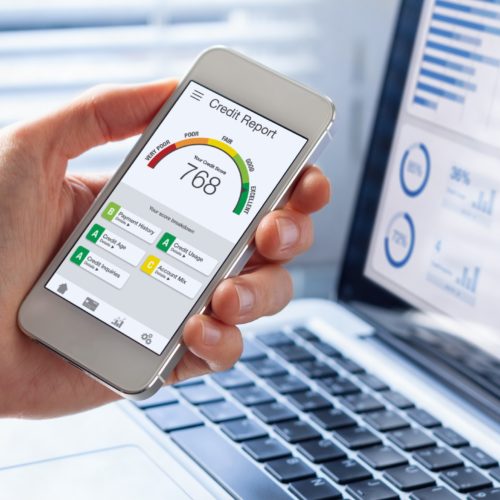Everyone would like to increase their credit scores, and the best way to do that is to engage in some form of credit repair.
Credit repair has a negative connotation because it’s associated with how to fix bad credit. But on the positive side, it involves a very similar strategy if you’re looking to improve an already good score.
Let’s take the topic of how to fix your credit in the most general sense, that way you can use it anytime you need to, whether you have good or bad credit.
If you have to go that route, the best strategy will be to subscribe to your credit report from all three bureaus. Since the information reported on each credit report is at least somewhat different from the others, the only way to know for sure bad credit references or errors are being eliminated is by regularly reviewing all three credit reports. Credit information may be repaired on one credit report and not on the other two.
Credit Repair Services
This is an industry group that has a questionable reputation. While there are some solid service providers, there’s more than a few that will take your money and do very little.
But if you feel that you’re not capable of DIY credit repair, this is an option you’ll need to seriously consider. Not everybody has a sufficient understanding of the credit system to get the job done. And perhaps more importantly, not everyone has the personality for it.
Dealing with creditors is never a pleasant experience. Not only do they not make it easy for you to get the job done, but the people you’re dealing with on the other end are a lot more experienced at playing the game. This puts you at a built-in disadvantage from the very beginning.
If you feel you’re unable to be tough (or even firm) in dealing with your creditors, you may need to bring in professional help. Credit repair services can provide that help. Much like the creditors, they employ people who work in the field and know the ropes. It always helps to have a third-party working on your behalf versus going up against an organization by yourself.
You’ll need to be very selective in choosing the right credit repair service. A good one will enable you to fix your credit in less time than you can on your own. But a bad one has the potential to make your credit situation even worse.
Beware of False Advertisements for Credit Repair
Whatever you do, avoid any credit repair services that promise to make your bad credit go away, raise your credit score by 100 points in 30 days, or any claims remotely close. That may sound like exactly what you’re looking for, but they’re all bogus.
What they do is dispute your negative credit with the credit bureaus, which temporarily removes those entries from your credit report. That may cause your score to rise dramatically, but it will fall again at the end of the dispute period because the disputes were never valid in the first place.
For really tough credit situations, your best choice may be a credit repair service that’s a law firm. Since lawyers have a firm command of credit law, they can often intimidate uncooperative creditors into being more agreeable.
Credit Repair Made Easier with Credit Repair Software
Even though I just described the general parameters of DIY credit repair, it’s not an approach I recommend lightly.
Yes, it is possible for anyone to improve their credit. Just paying your bills on time every month and gradually paying down your loan amounts will help move you in that direction. But if you have serious credit problems, or difficult credit errors, fixing them on your own can be a complicated process.
It may be possible to make credit repair easier with credit repair software. There are specific programs available that will provide you with a general credit repair strategy, and even provide templates for dispute letters and other important documents. That’s valuable in and of itself since it will prevent you from having to “reinvent the wheel.”
Believe it or not, learning how to fix your credit is a fairly standard process. Sometimes all you need is a general strategy and the right documents.
But with that said, it’s important to understand that while credit repair software will help you through the process, they won’t get the job done for you. You can use the strategies and tools provided, but it will be up to you to take any necessary action. If you don’t feel you can, then credit repair software won’t help much.
Do-it-Yourself (DIY) Credit Repair
Once you get copies of your official credit reports from all three credit bureaus, and you’ve initiated some sort of credit score monitoring service, you’ll have built the foundation to begin the credit repair process.
Start by reviewing all three credit reports. Pay particular attention to any derogatory information that’s been reported, as well as the amount of money you owe.
If you have fair or poor credit, you probably have significant derogatory information. That includes late payments, negative information reported in error, past-due balances, excessive debt levels, or even a significant public record, like a bankruptcy or a tax lien. You’ll need to target each of these entries for correction, or at least minimization.
If you have good or excellent credit, and you’re looking to increase your credit score, you’ll need to look at both the amount of money you owe on your obligations, as well as the number of credit lines with outstanding balances.
If you’re going to go the DIY credit repair route, your approach will need to be different if you have fair or poor credit, compared to good or excellent credit.
How to Fix Bad Credit
Once again, if you have fair or poor credit, there are almost undoubtedly negative credit entries pulling your score down. Carefully analyze your credit reports and highlight any such entries. The biggest “bang for the buck” with credit repair will come from fixing as many of those entries as possible.
One crucial point to be aware of from the beginning is that legitimate negative credit information cannot be deleted. If the credit card company has reported you 3X30 days late in the past year, and you were late on each occasion, it’s not something you can fix.
But here are some entries you can and should try to repair:
You’ll need to dispute errors in writing, supported by documentation. You can either do this by contacting the creditor directly or by going through the credit bureau. But either process will take at least 30 days, and frequently much longer.
How to Improve on Good or Excellent Credit
To anyone who has fair or poor credit, this may seem like an unnecessary effort. But interest rates you’ll pay on both new and existing credit are affected by your credit score. Raising it by 30, 40, or 50 points can lower your monthly payments.
If you have good or excellent credit, the main strategy will likely be to either lower the amount you owe on each of your accounts or pay off a few loans.
Improve Your Credit Utilization Ratio
Paying down loan balances will improve your credit utilization ratio. This ratio is calculated by dividing the amount of money you owe on credit cards by the total amount of your credit limits.
The credit scoring models favor a credit utilization ratio of less than 30%. If yours is higher than this, paying down your credit cards is one of the best ways to improve your credit score. For example, if your total credit limits are $20,000 and you owe $12,000, your credit utilization ratio 60%. Dropping down below 30% will make a noticeable improvement in your credit score.
The same is true with installment loans. If you took out a $30,000 car loan recently, and you still owe $28,500 on it, it will have a negative impact on your credit score. The credit scoring models consider a high balance on installment loans to be an indication of a recent obligation. The lack of payment history is viewed as a risk factor. By paying down your installment loans, you should see improvement in your credit scores.
Pay Off Small Balances
If you have small loan balances, pay those off as quickly as possible. The credit scoring models prefer when you have five credit accounts with open balances rather than eight. Your score should rise with each one you pay off.
Repairing Your Credit Is Possible
As you can see, the whole process of how to repair credit is a series of steps.
You might want to start using the DIY credit repair approach, taking advantage of good credit repair software. But if that starts to break down, or you feel that you’d rather not take on the task yourself, choose one of the reputable credit repair services.





No comments yet. Add your own